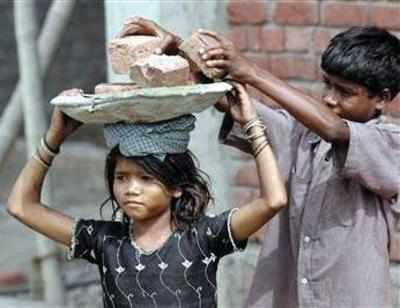- News
- India News
- 8.4cr Indian children don't attend school: Census data
Trending
This story is from September 23, 2016
8.4cr Indian children don't attend school: Census data

Freshly released Census 2011 data has revealed two alarming facts: as many as 78 lakh Indian children are forced to earn a livelihood even as they attend schools while 8.4 crore children don't go to school at all.
Although the share of working students is low, compared to the whole student population, the numbers are sufficiently big to show how much importance is placed on education by families and the children themselves.They also point to the increasing cost of education, which should ideally be free for the age group of 5 to 17 years.
Among students who work, 57 per cent are boys, the remaining 43 per cent are girls. Not surprising in a country where women account for only 27 per cent of the workforce because of patriarchal attitudes and lack of jobs force them into domestic work.
![HARD LESSONS FOR INDIA-Infographic-TOI[1]](https://static.toiimg.com/photo/83033472.cms)
The other equally shocking dimension is that 8.4 crore children don't go to school at all -that's nearly 20 per cent of the age group covered under the Right to Education Act.
Boys and girls make up nearly the same proportion of the out-of-school segment. But, contrary to popular perception that children don't go to school because they are forced to work, the Census data shows that just 19 per cent of them are working somewhere.
But it's not as if the remaining 81 per cent don't have to work. Many of them could well be doing domestic chores -from fetching water to lending a hand in whatever vocation their elders are engaged in.
Although the share of working students is low, compared to the whole student population, the numbers are sufficiently big to show how much importance is placed on education by families and the children themselves.They also point to the increasing cost of education, which should ideally be free for the age group of 5 to 17 years.
Among students who work, 57 per cent are boys, the remaining 43 per cent are girls. Not surprising in a country where women account for only 27 per cent of the workforce because of patriarchal attitudes and lack of jobs force them into domestic work.
![HARD LESSONS FOR INDIA-Infographic-TOI[1]](https://static.toiimg.com/thumb/imgsize-23456,msid-54482590,width-600,resizemode-4/54482590.jpg)
Of working students, some of them as young as six years old, 68 per cent are into marginal work. That's work which lasts for six months or less -predominantly agricultural or artisanal in nature. But they also serve as unskilled helpers in diverse enterprises. Main work, or work that continues year round, is the fate of the remaining 32 per cent. How this affects the child's learning process is yet to be studied but it surely is not doing them any favours.
The other equally shocking dimension is that 8.4 crore children don't go to school at all -that's nearly 20 per cent of the age group covered under the Right to Education Act.
Boys and girls make up nearly the same proportion of the out-of-school segment. But, contrary to popular perception that children don't go to school because they are forced to work, the Census data shows that just 19 per cent of them are working somewhere.
But it's not as if the remaining 81 per cent don't have to work. Many of them could well be doing domestic chores -from fetching water to lending a hand in whatever vocation their elders are engaged in.
End of Article
FOLLOW US ON SOCIAL MEDIA










